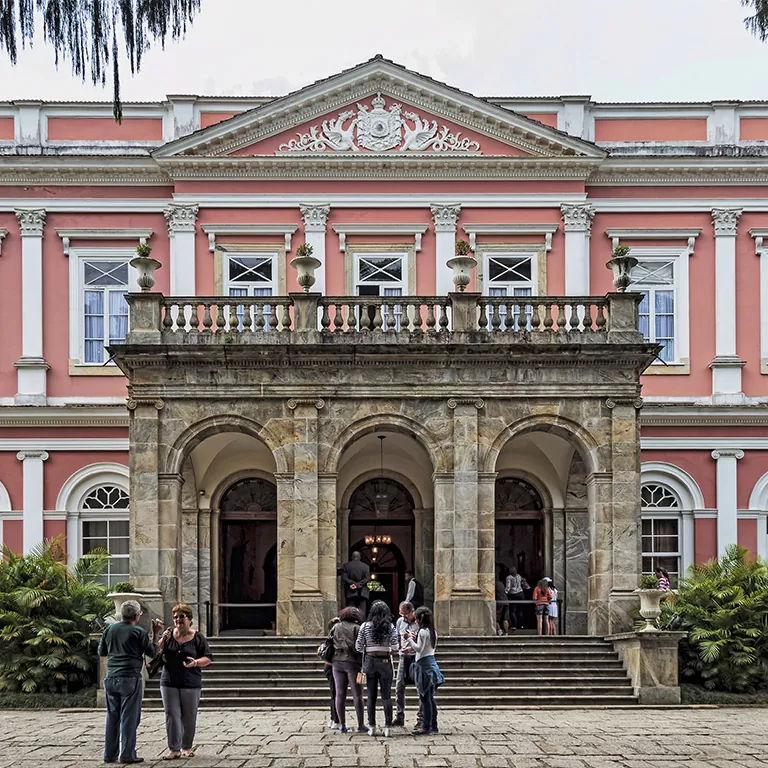
It’s no exaggeration to say that gold gave birth to Petropolis. Inhabited only by Indians until the 18th century, the region, which is 68km from the city of Rio de Janeiro, was “ discovered” by the Portuguese with the opening of the New Route to the gold mines, leading to Minas Gerais. History books tell us that Emperor D.Pedro I, in 1822, on a trip to the gold mines, stayed at a farm in that region, and, enchanted with the its climate and natural beauties, bought a neighboring farm, where he planned to build a palace.
The dream came true in 1843, when his son, D. Pedro II, issued a decree ordering the construction of a summer palace, which was completed four years later. Furthermore, the decree foresaw the settlement of a colony of German immigrants and the birth of a planned city – the second in Brazil, after Recife – surrounded by the Atlantic Forest.
Therefore, rich with stories, Petropolis was the Royal Family’s summer residence, and holds a vast architectural patrimony, theaters and museums, besides being the venue for important cultural festivals. Nowadays, it is still beautiful and, according to the Instituto de Pesquisa Economica Aplicada (IPEA – Institute of Applied Economic Research), it’s an excellent place to live in or visit: it is the safest city in the state of Rio de Janeiro, and the sixth safest city in Brazil.
The elegance of the city, which blends past and present in its buildings, in the habits of its residents and in its gastronomy, make Petropolis an invitation to memorable experiences. Proof of this is the fact that the local economy is based on cultural and historical tourism, as well as on the commercial and services sector, with an economy superior to that of states such as Roraima and Acre.
Situated in the mountain region of the state of Rio de Janeiro, Petropolis is the city that receives the most tourists per year. The high season of the city’s hotels starts in July, with the beginning of winter and the Bauernfest. The “Feast of the German Settler” has folklore, choral groups, and traditional bands, besides the famous beer by the meter contest and typical German dishes.
Architectural patrimony
The architecture of Petropolis is outstanding. Walk down Koeler Avenue and feel you are in the 19th century. The historical center, where the Imperial Palace is situated, boasts lovely manors and mansions, such as the “Enchanted” (Santos Dumont’s summer home), and several palaces: the Palacio de Cristal (Crystal Palace), Palacio Amarelo (Yellow Palace – seat of the City Council) and the Palacio Rio Negro (Black River Palace).
Petropolis has two theaters: the D. Pedro Theater, one of the largest in the state, and the Santa Cecilia Theater. As for museums, the Imperial Museum is outstanding, one of the most important historical museums in Brazil, with a collection of items from the Brazilian Monarchy. Visitors should also include in their tour the Museu de Cera de Petropolis (Wax Museum), the Museu Casa de Santos Dumont (Santos Dumont’s house), Princess Isabel’s House and the Rio Negro Palace.











